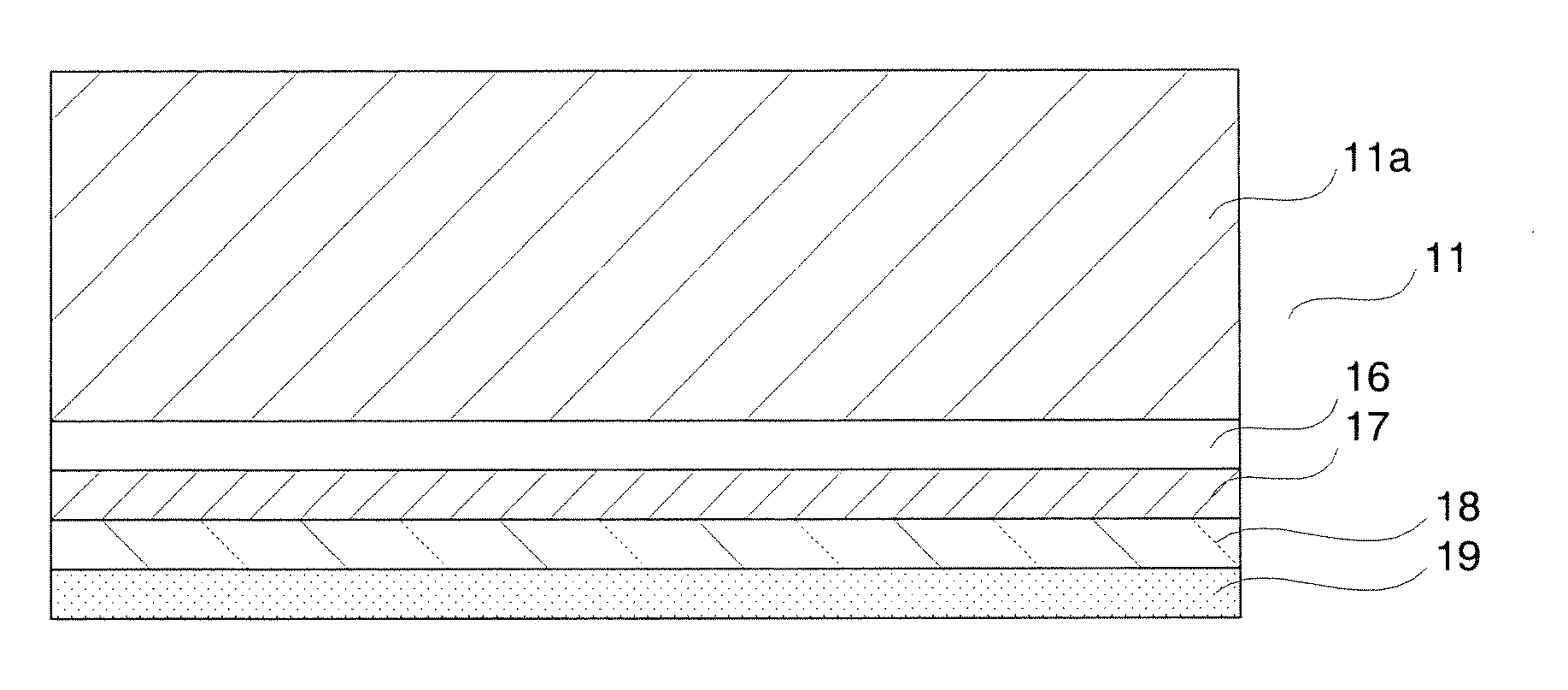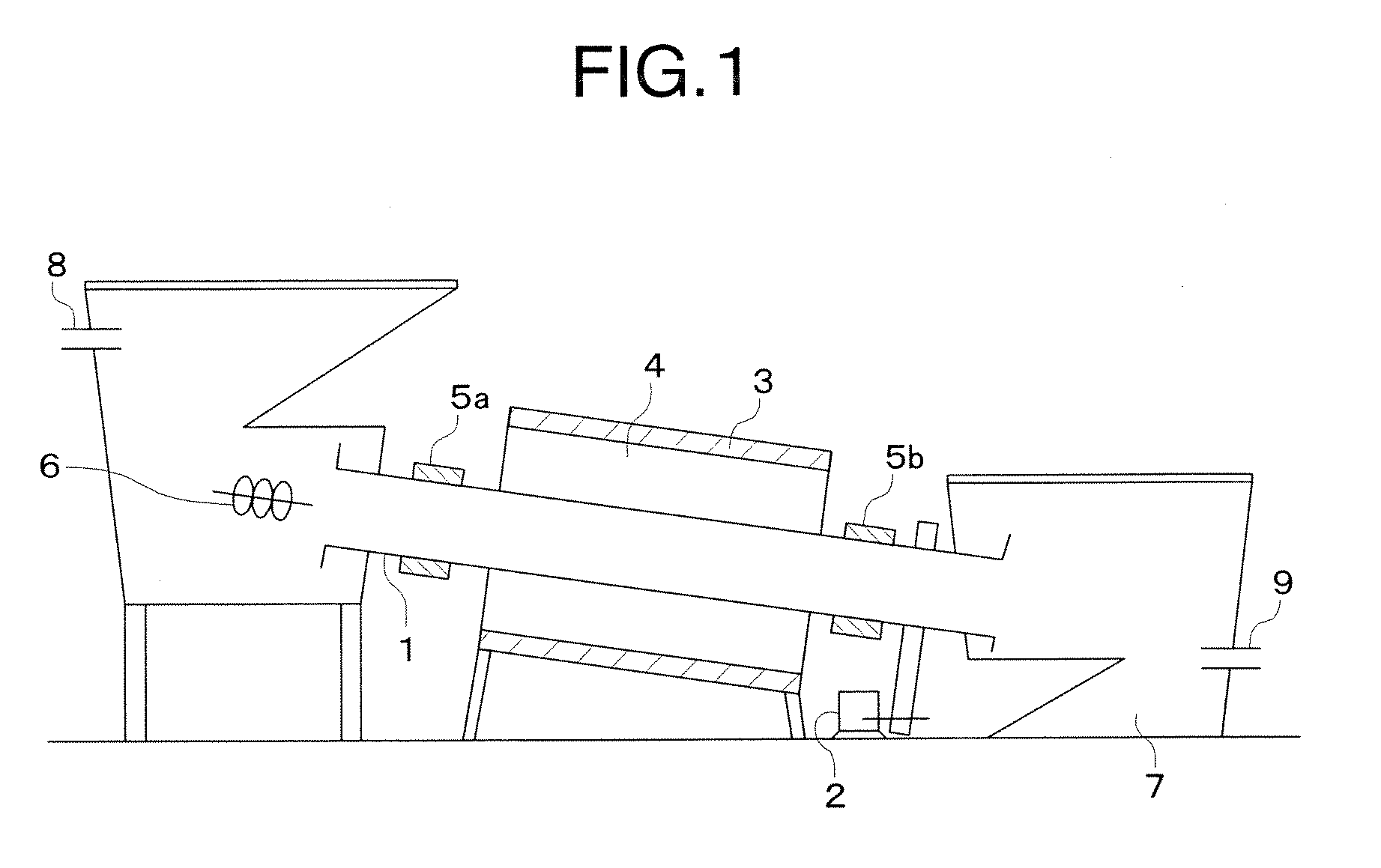Phosphor, process for producing phosphor and luminescent device
a technology of phosphor and light-emitting device, which is applied in the direction of discharge tube/lamp details, discharge tube luminescnet screen, silicon compound, etc., can solve the problems of poor dispersibility of phosphor particles, inability to obtain high luminance, compact light-emitting layer, etc., and achieve high emission luminance, good light-emitting properties, and high packing density
- Summary
- Abstract
- Description
- Claims
- Application Information
AI Technical Summary
Benefits of technology
Problems solved by technology
Method used
Image
Examples
examples 10 to 18
[0098] As phosphor material, 30.0 g of silica (SiO2), 65.0 g of zinc oxide (Zno) and 6.5 g of manganese carbonate (MnCO3) were mixed thoroughly and charged into the heat resistant vessel of the burning apparatus shown in FIG. 1. The heat resistant vessel was disposed at inclined angles of 1 to 5° with respect to the horizontal and rotated about its axis at speeds of 0.5 to 10 rotations per minute. And, the heat resistant vessel had an air atmosphere in it. The phosphor material were heated for burning while being flown or rotated in the heat resistant vessel at temperatures of 1200 to 1250° C. for one to three hours. Heating conditions (heating temperatures, heating time periods, and rotating speeds) of the burning apparatus are shown in Table 2.
[0099] Then, the obtained burned materials were washed with an ion exchange water or the like and dried and, if necessary, sieving or the like was performed to remove coarse particles, and manganese activated zinc silicate phosphors (Zn2SiO...
PUM
| Property | Measurement | Unit |
|---|---|---|
| afterglow time | aaaaa | aaaaa |
| acceleration voltage | aaaaa | aaaaa |
| wavelength | aaaaa | aaaaa |
Abstract
Description
Claims
Application Information
 Login to View More
Login to View More - R&D
- Intellectual Property
- Life Sciences
- Materials
- Tech Scout
- Unparalleled Data Quality
- Higher Quality Content
- 60% Fewer Hallucinations
Browse by: Latest US Patents, China's latest patents, Technical Efficacy Thesaurus, Application Domain, Technology Topic, Popular Technical Reports.
© 2025 PatSnap. All rights reserved.Legal|Privacy policy|Modern Slavery Act Transparency Statement|Sitemap|About US| Contact US: help@patsnap.com



